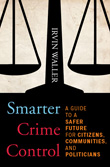Crime is reduced by shifting police resources to targeting … hotspots, repeat victims, problem oriented policing, and prolific or high volume offenders. For a long list see the review on what is effective and what is not by Telep and Weisburd.
Crime and violence is prevented by police leaders who partner with leadership from schools, housing and so on in ¨multi-sector partnerships¨ These must be sustained and targeted by a permanent violence reduction centre. Glasgow in Scotland provides a great best practice showing how enforcement and prevention, (not enforcement or prevention) is combined to target the causes of urban and gang violence.
3. Preventing crime by support for targeted social sector expenditures.
Law enforcement can use its influence to protect and increase funding for investments that have been proven to reduce violence. Police leaders talk to legislators and the media about fighting crime by investing in kids. Focusing action and sustainable resources on early childhood experiences through parenting programs is one way to reduce the crime of child abuse and ultimately teenage offending.
There are several other programs that focus on mentoring youth and helping excluded youth that need sustained funding and so encouragement from police leaders. My favorites are Youth Inclusion Projects, SNAP, Big Brothers and Quantum opportunities. The World Health Organization, US DOJ Crime Solutions, my two books and a list of important websites provide more information.
4. Enhancing law enforcement response to crime victims.
The IACP has prepared materials and tested them on the ground so that police services can put crime victims at the zenith of policing. BTW This also enhances the public and victim´s image of police and increases the number of victims who report crime to police.
Some considerations in making the shift from reaction to prevention
The science on what reduces crime has never been more practical and strong than in 2013. It has never been so easily available. Yet politicians responsible for allocating taxes to policing and other strategies are not yet applying this science enough to avoid victimization, prevent crime and reduce priority calls for service. Police Chiefs must be leaders in this movement to respect the number one right of crime victims – not to be victims of crime or violence.
Police leaders and their political bosses and indeed the general public (who read more than the spin in the national media) now have easy access to what police can do to reduce crime. The police inspectorate for England and Wales (HMIC) has produced a guide to what the evidence says about the best thing for the police to do to reduce crime. It was produced by experts. But it is written for elected officials who will have oversight of policing and crime reduction. So it is brief and written in plain English but based on science – much of it from North American.
One challenge to shifting police resources from reaction to a balance between an active role in prevention and smart enforcement is the extent to which the standard police resources are tied up reacting to crime rather than reducing it. The US National Research Council report on effective policing pointed out that the responses to 911 calls eats up two out of every three dollars in the USA. Another one dollar in five goes to investigation.
The Economist reports ¨that frontline police do, in fact, spend about 80% of their time on activities related to crime, however tangentially. But they should focus more on preventing crime, it concludes, not just huffing up to the scene afterwards.¨ They were commenting on the recent report on how police spend their time which was also produced by the police inspectorate (HMIC) for England and Wales.
Ultimately the litmus test of sound police leadership must include shifting resources smartly to what reduces crime and prevents victimization while advancing the response to victims to international standards. Both Less Law, More Order and Rights for Victims of Crime set this overdue reform movement in the context of rebalancing budgets towards less crime.

